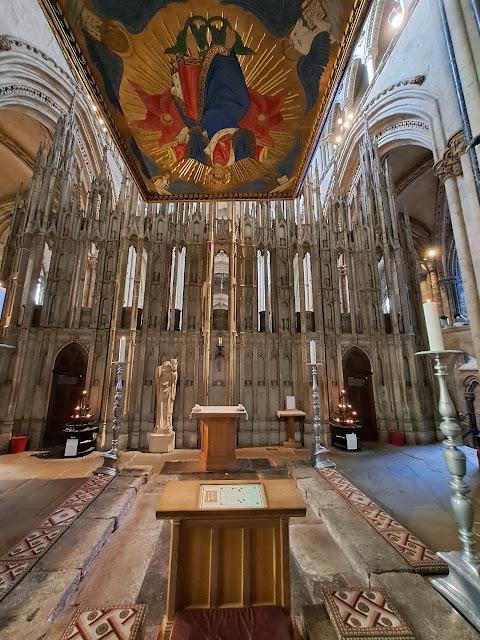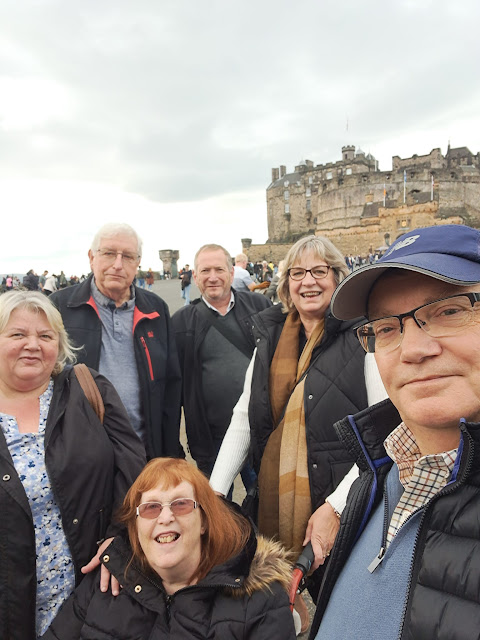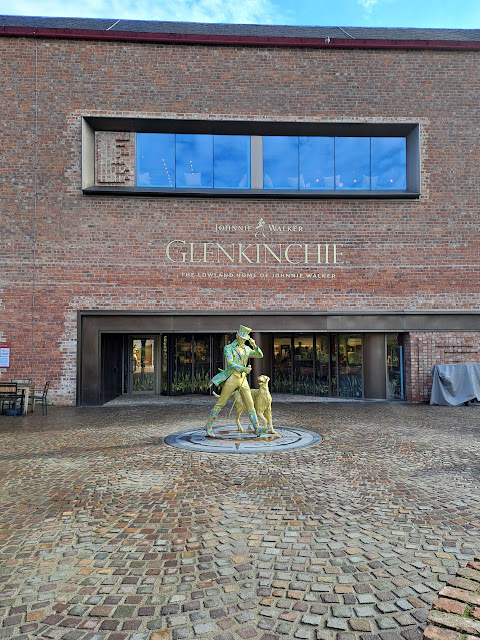After our few days in Edinburgh we stayed in Berwick-upon-tweed along with our friends. Although the Haven site is quite large our caravans were nearby each other so not far to walk home after our evenings together.
Hubby and I visited
Berwick-upon-tweed in 2021 when there were still restrictions so we were looking forward to revisiting. However we were still restricted as one day it poured down with winds over 65km, nice to watch the rough sea but not great for walking around.
We did manage to walk the ramparts around the town. The bridges are quite a sight and as the tidal river Tweed was low there were herons on the shoreline. Each one on their own dotted along river edge, we wondered if each had their own patch.
Berwick-upon-tweed is a place often visited by L. S. Lowry. The famous matchstick people painter loved to holiday in Berwick-upon-tweed, The Lowry Trail around the town features many of his paintings.
We didn't follow the trail but did see this Lowry board on our rampart walk. The buildings are still quite similar today, just a few changes showing how life is different now - yellow lines and vehicles instead of people.
In the centre of the town is Berwick Barracks, this was closed on our last visit. The Barracks were purpose built in the 18th century to protect the Border. Today the buildings house various museums about the history of Berwick-upon-tweed and the King's Own Scottish Borderers museum. It was interesting to visit this English Heritage property but wasn't wheelchair accessible so not suitable for one of our friends.
On our final day we drove inland and across the border back into Scotland to visit Coldstream. The museum there was really good with lots of information about the Coldstream Guards as well as the local area.
We stopped by the Union Chain Bridge on the way. Although construction of the Menai Bridge had begun the Union Chain Bridge was the first wrought iron suspension to be opened. In 1820 it was the longest vehicular Bridge with a span of 449 feet. The bridge was very much needed and although free today people were happy to pay the crossing toll as the alternative route was either 11 mile round trip via Berwick-upon-tweed or a 20 mile route via Coldstream.
Crossing today is on foot or one vehicle at a time. It is a narrow crossing and the suspension bridge does move up and down with the weight of a vehicle as it crosses, it looks quite drastic and I'm glad we drove across before I saw a crossing. It was a lovely location, the River Tweed was very full and fast flowing after all the rain.
We had a good time with our friends, we always do when away... good food and good wine. Although the weather was typically British our short stay in Berwick-upon-tweed was lovely, it is somewhere I would visit again.






































